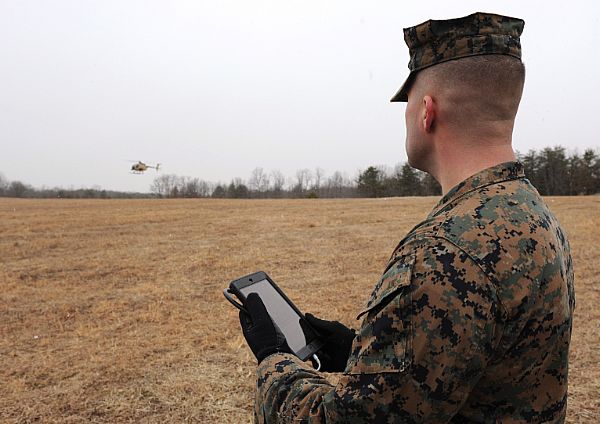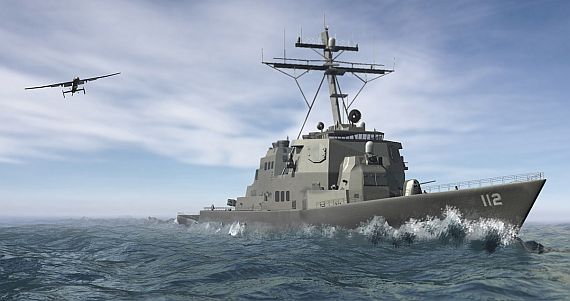
LONDON — The Office of Naval Research (ONR) is making giant strides in its quest to develop the next generation of unmanned aerial vehicles (UAVs), but hopes that their introduction into service will result in manpower savings may be misplaced.
Addressing a seminar on U.S. and U.K. future air dominance at the DSEI exhibition in London on Tuesday, the commander of ONR Global said that progress was being made on several “leap ahead” initiatives: the Autonomous Aerial Cargo/Utility System (AACUS), Tactically Exploited Reconnaissance Node (TERN) and Low Cost UAV Swarming Technology (LOCUST) programs.
With personnel costs the Department of Defense’s biggest single budget line (accounting for 33.5 per cent of total spending in fiscal year 2015), Capt. Clark Troyer said the ONR and its partners were striving to reduce the number of people required to operate and sustain the new UAVs.
However, a cautionary note about the ability of such systems to reduce manpower costs was sounded by fellow speaker Brigadier Simon Humphrey, Director of the British Army’s Combat Support Capability Directorate, who pointed out that his service’s new Watchkeeper UAV came with “significant bills” for pilots, launch and recovery crews and maintenance personnel.
“Manpower is a hugely expensive overhead and our unmanned systems don’t reduce that overhead significantly or at all”, Humphrey said.
LOCUST is intended to overwhelm the enemy by unleashing a barrage of multiple small, tube-launched UAVs, which share information to enable autonomous collaborative behavior in defensive or offensive missions. A ship based demonstration in 2016 is expected to involve the rapid lauanch of 30 air vehicles. “Development of UAV swarms will provide a decisive tactical advantage”, Troyer said.
Employing autonomous obstacle avoidance and precision landing capabilities, AACUS seeks to get urgently-needed supplies (notably ammunition, fuel and water) and casualty evacuation assets to marine corps units in adverse weather conditions that would prohibit manned flights. AACUS technologies will be transferrable to new and legacy rotary-wing arcraft, both manned and unmanned, and will be operable by untrained marine specialists.
The TERN program – a joint initiative with the Defense Advanced Research Projects Agency – is intended to allow forward-deployed surface combatants (primarily destroyers) to serve as launch and recovery platforms for medium-altitude, long-endurance UAVs equipped for persistent ISR missions. “We’re looking at taking the capability from 200 miles up to 600 miles with this system”, Troyer said. A test flight of a full scale demonstrator aircraft is planned in 2018.
“We’re looking for ideas for UAS to go beyond the ‘dull, dangerous and dirty’ missions. We’re looking for systems that work as teams with warfighters,” Troyer said.
“Challenges to take into consideration include optimum manning, limited or denied comms [and] rapid dynamic responses to operational changes.”

Troyer said concepts of operations were being drawn up to permit manned and unmanned systems to operate together, such as the MQ-4C Triton UAV with the P-8A Poseidon maritime patrol aircraft, the Fire Scout UAV with MH-60 helicopters (embarked in Littoral Combat Ships), and the RQ-21 Blackjack UAV with amphibious shipping and special forces.
“Overarching technology needs are in cyber security, data management, data fusion, open architecture, modularity, assured navigation and communications in denied environments, non-GPS precision navigation [and] operational dynamic resource management.”, he said.
Technology priorites for the U.K. Royal Navy – which include autonomy, additive manufacturing (3D printing), power and energy, interoperablity and big data – were closely aligned with the ONR’s needs, he noted.
In summary, he said the U.S. Navy was looking for “persistence in unmanned systems; capacity with remote platforms and sensors; capability with automated sensors; flexibility with modular, scaleable plug and play sensors; and accelerated developments as we see these systems come on line.”





